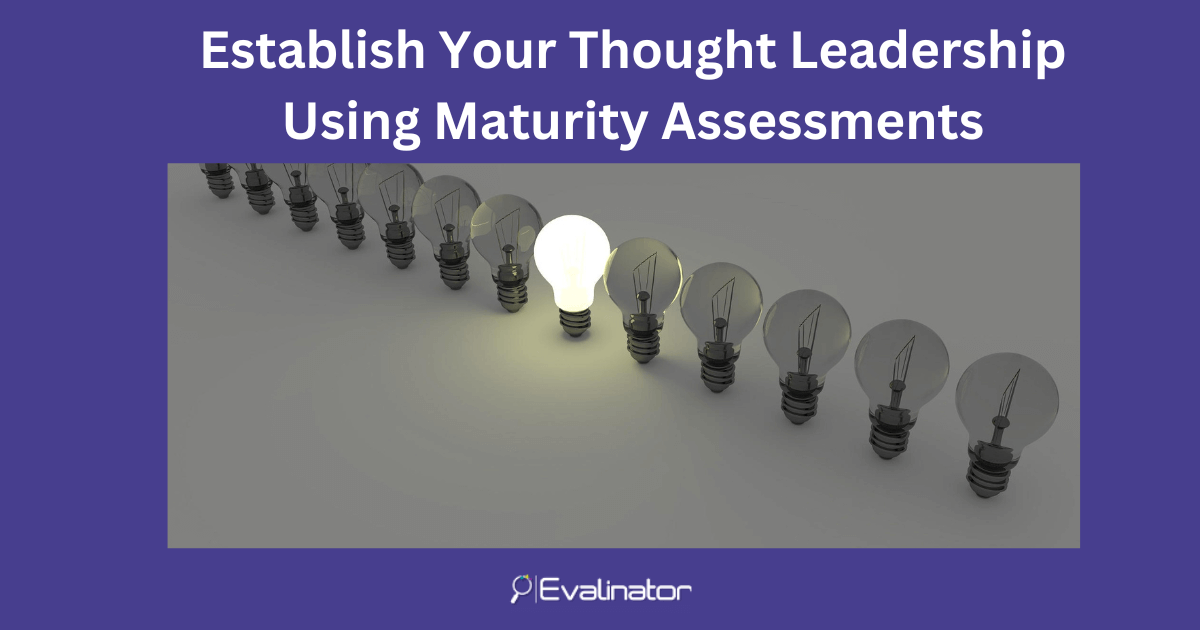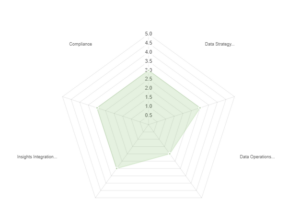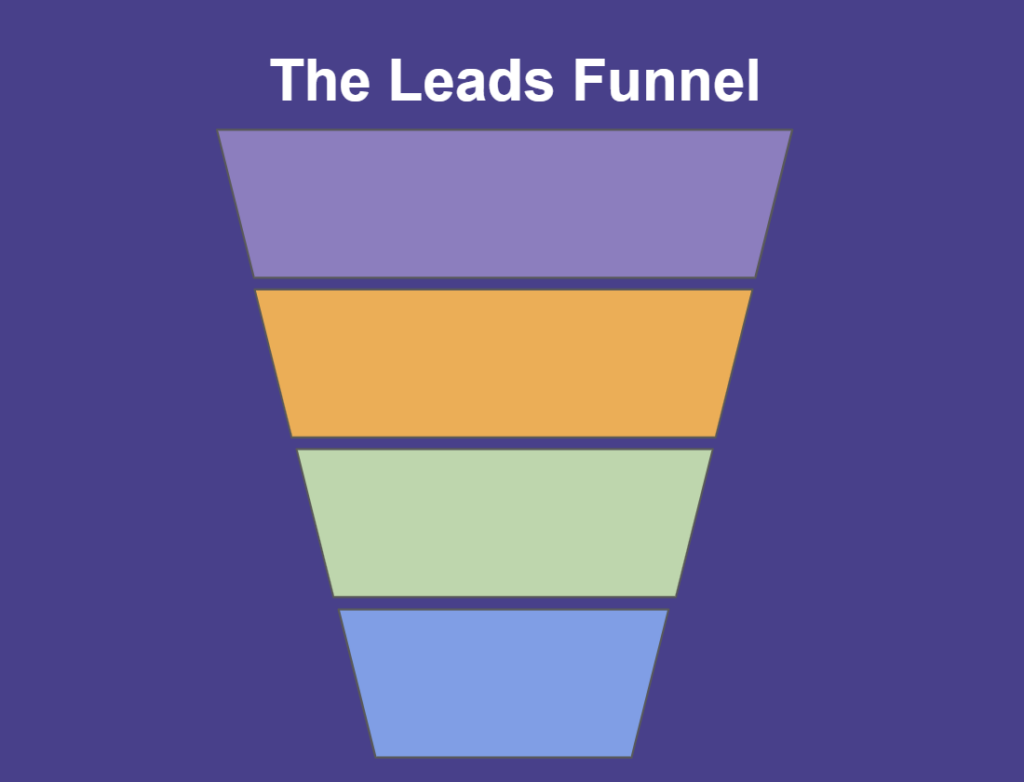


In this post, we’ll outline what interactive maturity assessments / models are, and how to use them to rise above the noise.
The goal is to grow your business by position yourself as a clear expert.
If you’re a subject matter expert, you know that it’s important to convey your expertise clearly and in a structured manner to your clients and prospects.
For example, if you are a digital or analytics expert, you may want to help your clients navigate their data & technology roadmap. If you are a process consultant, your clients look to you to help them understand the status quo and make the necessary improvements. And if you are a coach, clients would look to you to help them build a map to achieving their goals.
In all cases, you need to help your clients with
That’s where maturity assessments or models come in.
Maturity assessments or maturity models are basically expert questionnaires with additional and interesting features.
They are not a new development. One of the most popular examples from the software field is the Capability Maturity Model (CMM) created in 1986 by the SEI institute at Carnegie Mellon University. Another great example for personal transformation is the “wheel of life” if the individual life area scores are rolled up to provide a tiered overall score.
The premise of a maturity assessment is simple: through a series of insightful questions that are scored individually, the expert computes an overall score and assigns a maturity level or tier to the respondent.
Typically in addition to the scores for each question, there is a dimension or category score, and between 3 and 5 maturity levels.
For example, the CMM assessment has 5 maturity levels which indicate the proficiency of the organization from “Initial” (least proficient or mature) to “Optimizing” (most mature).
Similarly, a Wheel of Life has 8-12 areas of life that could be rolled up into an overall “life score”. Evalinator has several templates for digital maturity, cloud maturity, data maturity, architecture, and so on.
Maturity assessments or models are very useful because they provide an actionable guidance to the respondents about:
Once this is established, then the sequence in which actions are taken will depend on various factors such as budgets, skills, and time.
As you can see, a maturity assessment is an incredibly powerful tool to not only demonstrate your expertise, but also take your clients along a structured journey towards clearly and collaboratively defined outcomes.
The expert who creates the maturity assessment creates it based on their expertise and experience. They bring their unique insights, empirical knowledge, peer inputs, and other industry data to decide what constitutes the various maturity levels and how to measure them.
Evalinator provides several starter templates for maturity assessments that you can use to craft your own maturity assessment or model.
As an example, consider this assessment by a leadership & executive coach who categorized respondents into 3 levels. The assessment has 10 questions and respondents are assigned one of the three levels based on the total score. Then, from this position of self-awareness, the coach takes the respondents on a journey of introspection so they can improve their behaviors and performance as appropriate.

Interestingly, the model also shows how many respondents fell into each bucket. This is great for empirical analysis and benchmarking. For example, you can see that about 50% of the respondents are in the “Safe Lane” while only about 3% of the respondents are actually satisfied with their career progression.
In addition, the maturity assessment will also benchmark respondents into other profile characteristics such as department (sales, HR, etc.), age, and type of industry. All this is valuable data.
There are maturity assessments which are not always seeking to slot the respondents into a specific category but just want to point out their overall “distance” from what good looks like.
For example, we may use a dimensional display of the results and eliminate the traditional maturity level display. For example, consider this analytics maturity assessment by an AI focused enterprise technology firm.
 As you can see, the experts grouped their questions into these 5 overall dimensions. The categories themselves come rom their unique data management framework. Their clients easily see their areas of improvement without being slotted into an overall tier. The experts grouped the questions under these categories and rolled up the scores of individual questions.
As you can see, the experts grouped their questions into these 5 overall dimensions. The categories themselves come rom their unique data management framework. Their clients easily see their areas of improvement without being slotted into an overall tier. The experts grouped the questions under these categories and rolled up the scores of individual questions.
These maturity assessments are very useful when an overall tier may not be as relevant or demonstrative of the subject area.
You benefit from creating a maturity assessment in multiple ways.
A maturity assessment firmly establishes you as an expert who is able to distill the knowledge into a structured format. A lot of us can talk about the subject area in detail, and can point out what’s good and what needs improvement. However, it takes a different kind of focus to systematically help clients create a shared vision and roadmap.
Creating a maturity assessment implies that you are also defining recommendations for clients in various stages of maturity. This means that you have empirical knowledge and experience of your subject area.
Since a maturity assessment often includes different topical areas, you also come across as someone who can look at a problem in a holistic manner.
This ability for multi-dimensional analysis is a key aspect of your expertise perception.
Apart from these benefits, an interactive maturity assessment is also a great tool to cement your client relationships and accelerate the growth of your relationships. That’s because a maturity assessment allows you to engage in true consultative selling. You and your clients are working towards a well stated shared vision.
Some of the benefits to growth of your practice are:
As an expert, you are always thinking of improving your mind share, and bringing your expertise to your target audience.
Thus, you can enhance your marketing and demand generation efforts by closely anchoring your messaging around your evergreen content.
A maturity assessment is a great tool to channel your expertise in a structured manner.
Since Evalinator is a client engagement platform, and not just a quiz tool, it provides you an excellent platform to create an interactive maturity assessment in your area of expertise.
It allows you to move from PDF and paper based reports to a fully digital and ongoing client engagement.
There are several base templates for both consultants and coaches available which you can tailor for your expertise area. We also have experts who can work with you and help you craft a maturity assessment which fully reflects your expertise.
Learn about the platform, and get started today with a free trial. We’ll be there every step of the way to help you create your maturity assessment.

Feeling frustrated with lead generation?
Take this free, 5-minute quiz and get more prospects into your leads funnel.
Instant Results. Actionable recommendations. Email required.
Find Your Score >>